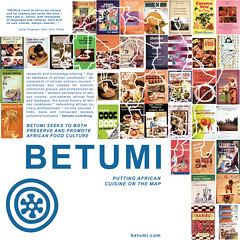Feijoada Cooking Lesson
I'm having a lot of cooking lessons these last few weeks before I leave Brazil. This month I learned the basics for making feijoada, that wonderful bean and meat stew that's practically synonymous with "Brazilian food" (note: I first blogged about it on August 15).
Here is a quick summary:
On Friday, Nov. 9, 2007, Claudia Lima, her co-worker friend Ilda De Sousa Batista and I went to downtown’s sprawling, lively Mercado Central (Central Market) to buy the ingredients for Sunday’s feijoada party.
Our first stop was at what they assured me was THE BEST place in Belo Horizonte to buy the meat: O Rei da Feijoada Ltda. (the King of Feijoada). This was the first step in untangling the mysteries of all the smoked and salted meats that are integral to this dish.
Upon arriving at O Rei da Feijoada, they hand you a paper over the counter with a chart that lists 19 ingredients to choose from (in Portuguese, of course). We took 9 items, including a special sausage for an appetizer (tiragosto)
There we picked, taken from the receipt, as well as I can tell:
Feijao preto (black beans) 2 pkgs (1 kilo each)
Lingua suina salgada (.815 K)
Pe suina salgada (1 K) [salted pig’s feet]
Lombo defumado (1.1 K) [smoked pork loin]
Costela defumada inteira (1.15 K) [smoked pork ribs]
Linguica defumado ext. gros (.92 K)
Charque trazeiro (1.1 K) [smoked beef]
Rabo Suino salgado (.4 K) [salted pork tail]
Linguica Paio Edtra (.78 K) (special pork sausage)
Bacon Extra (.25 K)
Next Ilda went and bought some special Minas cachaça (Joao Mendes, or JM) for the caipirinhas while Claudia and I went to by the long grain rice (arroz), some vegetable oil (oleo) and salt. Then we went for fresh produce and fruits. Some couve (this is usually referred to as kale or collard greens).
Ilda spent Saturday de-salting and cooking of the salted meats, and pounding the garlic and salt and generally doing the prep for much of Sunday's work, when we actually cooked the beans and meats together (sautéing each of the sausages and smoked meats separately before adding them to the beans and salted meats), prepared the side dishes, etc. On Sunday Ilda and her sister Inesia de Sousa Batista and I arrived early at Claudia's apartment with cooking equipment and ingredients. We set up in the huge but private indoor-outdoor space for parties and people began arriving beginning mid-morning to early afternoon. There was a lot of fellowship, snacks and drinks to get people in the mood. Throughout the afternoon, Sonya Rocha played a few songs on her guitar, and by the end of the fun, relaxing (if busy) day, I felt more connected to Brazil than ever before.
Here are some pictures and a couple of video clips I took:
Labels: belo horizonte, betumi, claudia lima, ilda de sousa batista, inesia de sousa batista, jeijoada, Osseo-Asare, sonya rocha


